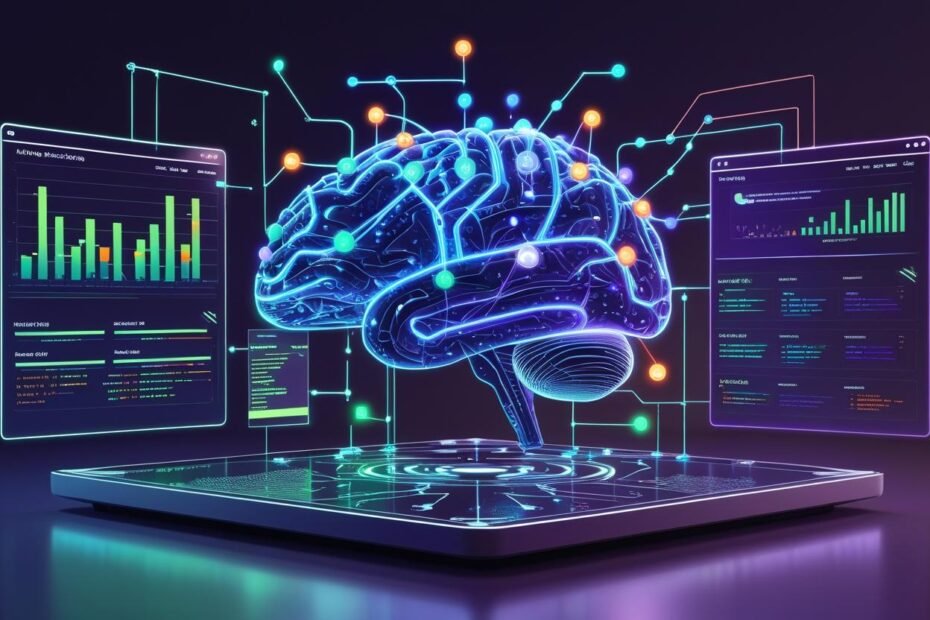AI Reasoning means giving artificial intelligence the ability to think logically, analyze complex problems step-by-step, and make decisions with explainability—much like human reasoning. This goes beyond pattern recognition or simple text generation, enabling AI to break down tasks, verify its own conclusions, and provide trustworthy answers.
Why was AI Reasoning created?
To solve real-world challenges that require deep understanding, multi-step logic, and transparent decision-making. For example, in healthcare, reasoning AI can analyze patient data and clinical guidelines to suggest accurate diagnoses with explainability, crucial for trust and safety.
Interesting Example:
Imagine a financial institution assessing loan applications—not just scoring based on past data but reasoning through economic scenarios and borrower profiles to make smarter, fairer lending decisions.
Leading AI Reasoning Models and Their Use Cases
| Provider | Model Name | What They Do | Best Use Cases |
|---|---|---|---|
| Gemini 2.5 Pro | Advanced reasoning integrated into AI products for complex decision-making | Supply chain, customer support, logistics | |
| OpenAI | GPT-4 (o3 series) | Language models with chain-of-thought reasoning for problem-solving and coding assistance | Conversational AI, programming, research |
| Perplexity AI | Perplexity Reasoning | AI search assistant that reasons over data to provide accurate, context-aware answers | Research, customer support, knowledge discovery |
| Grox | Grox Reasoning AI | Focuses on explainable reasoning for enterprise automation | Compliance, risk assessment |
| DeepSeek | R1-0528 | Open-source reasoning model using reinforcement learning and chain-of-thought for logical tasks | Coding, math, programming, general logic |
Spotlight on DeepSeek
Chinese startup DeepSeek recently upgraded its open-source reasoning model R1-0528, bringing it close to the performance of OpenAI’s top o3 and Google’s Gemini 2.5 Pro models14. By increasing the tokens processed per question and optimizing algorithms, DeepSeek’s model improved math accuracy from 70% to 87.5% on a challenging test1. It also hallucinates less and better supports function calling and “vibe coding,” where developers write code using natural language prompts1.
DeepSeek’s approach combines chain-of-thought reasoning with reinforcement learning, allowing the AI to learn reasoning patterns through trial and error without relying solely on labeled data89. This breakthrough shows smaller, efficient models can rival larger ones, benefiting the research community with open-source releases9.
When to Use AI Reasoning and When Not
Best Use Cases:
- Complex, multi-step problem solving (e.g., medical diagnosis, legal analysis)
- Adaptive real-time decisions (e.g., autonomous vehicles, cybersecurity)
- Tasks requiring explainability and trust (regulated industries like finance, healthcare)
When Not Needed:
- Simple pattern recognition (e.g., image tagging)
- Tasks prioritizing speed over detailed reasoning (e.g., bulk content generation)
Benefits of Turning on Reasoning:
- Higher accuracy and reliability
- Explainable decisions for compliance and user trust
- Slightly increased computational cost and response time
Pros and Cons of AI Reasoning
Pros:
- Smarter, context-aware decisions
- Builds trust with transparent logic
- Automates complex, high-stakes tasks
Cons:
- More computational resources needed
- Potentially slower responses
- Technology still evolving in scalability
How Different Roles Can Leverage AI Reasoning
Marketing Professionals:
- Analyze customer feedback deeply to predict trends
- Personalize campaigns using logical segmentation
- Automate complex customer queries with contextual understanding
Technical/IT Professionals:
- Diagnose system issues with advanced root cause analysis
- Automate incident response by reasoning through logs and tickets
- Enhance cybersecurity by reasoning about threat patterns and mitigation
AI Reasoning is revolutionizing how businesses approach complex challenges by embedding human-like logic and transparency in AI systems. Whether you’re in marketing or IT, understanding and using reasoning AI—like DeepSeek’s R1 or OpenAI’s GPT-4—can unlock smarter, more trustworthy automation and insights.
Citations:
- https://www.pymnts.com/news/artificial-intelligence/2025/deepseek-upgrades-ai-reasoning-model-rival-openai-google/
- https://www.reuters.com/world/china/chinas-deepseek-releases-an-update-its-r1-reasoning-model-2025-05-29/
- https://www.scmp.com/tech/tech-trends/article/3312254/deepseek-quietly-updates-r1-ai-model-amid-anticipation-next-gen-tech
- https://www.cnbc.com/2025/05/29/chinas-deepseek-releases-upgraded-r1-ai-model-in-openai-competition.html
- https://www.scmp.com/tech/tech-trends/article/3305259/deepseek-unveils-new-ai-reasoning-method-anticipation-its-next-gen-model-rises
- https://arxiv.org/abs/2501.12948
- https://www.snexplores.org/article/deepseek-ai-reasoning-agents
- https://www.ibm.com/think/news/deepseek-r1-ai
- https://huggingface.co/deepseek-ai/DeepSeek-R1
- https://www.techtarget.com/whatis/feature/DeepSeek-explained-Everything-you-need-to-know
